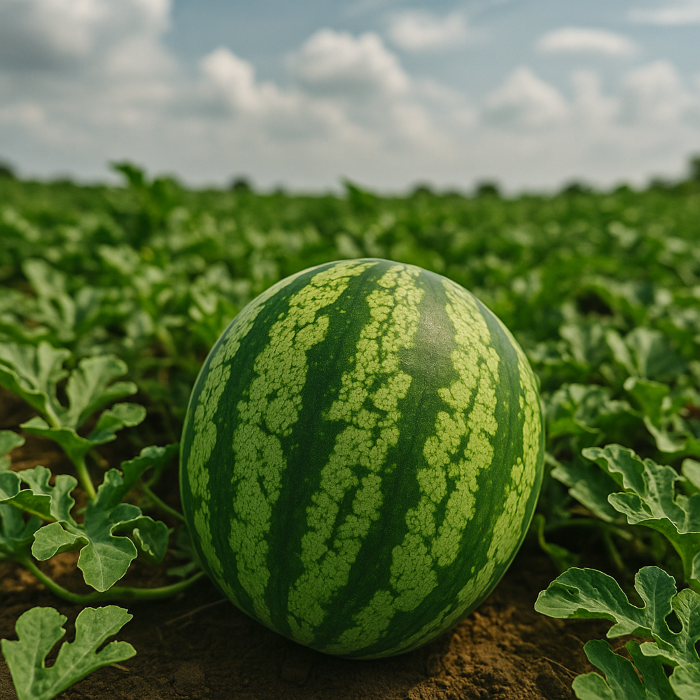Watermelon Farming in Kenya: Best Practices for High Yields and Profit
Posted on June 26, 2025

1. Introduction to Watermelon Farming in Kenya
Watermelon farming is a lucrative agribusiness in Kenya due to its high demand, fast maturity, and adaptability to warm climates. With proper planning, farmers can earn high returns from small plots.
2. Ideal Climate and Soil Conditions
Watermelons thrive in hot, sunny climates with well-drained, sandy loam soils. The ideal pH ranges between 6.0 and 7.5. Avoid waterlogged areas to prevent root rot.
3. Land Preparation
Plough the land deeply and remove all weeds. Create raised beds or mounds spaced 2–3 meters apart for optimal vine spreading and water flow.
4. Seed Selection and Planting
Use certified seeds from trusted suppliers. Popular high-yield varieties in Kenya include Sukari F1, Sugar Baby, and Crimson Sweet.
Sow 2–3 seeds per hole and thin to one healthy plant after germination. Space plants 90–100cm apart in rows spaced 2 meters apart.
5. Watering and Irrigation
Watermelons need consistent watering during the first 4–6 weeks. Drip irrigation is highly recommended. Reduce watering when fruits start maturing to avoid cracking and poor sweetness.
6. Fertilizer and Soil Nutrition
Apply well-rotted manure during planting. Supplement with NPK 17:17:17 or CAN after germination. Conduct soil tests to avoid over- or under-fertilizing.
7. Pests and Diseases Management
Common pests: aphids, fruit flies, and spider mites.
Diseases: powdery mildew, anthracnose, and fusarium wilt.
Control with integrated pest management (IPM), using safe pesticides and regular scouting.
8. Weed Control
Weed regularly during early growth stages. Mulching can reduce weed growth and conserve moisture.
9. Harvesting and Post-Harvest Handling
Watermelons are ready in 70–90 days. Indicators include drying tendrils near the fruit, dull sound when tapped, and yellowing on the underside.
Handle carefully to avoid bruising and store in cool, shaded areas.
10. Profitable Tips for Kenyan Farmers
-
Grow off-season for higher prices
-
Target urban markets like Nairobi, Mombasa, and Meru
-
Practice crop rotation to prevent soil diseases
Conclusion
Watermelon farming offers great returns with minimal input. With the right agronomic practices, Kenyan farmers can enjoy sweet profits from this juicy crop.
For quality seeds, agrochemicals, and expert guidance, visit Farmers Centre Ltd or WhatsApp us directly at +254 110 089926.